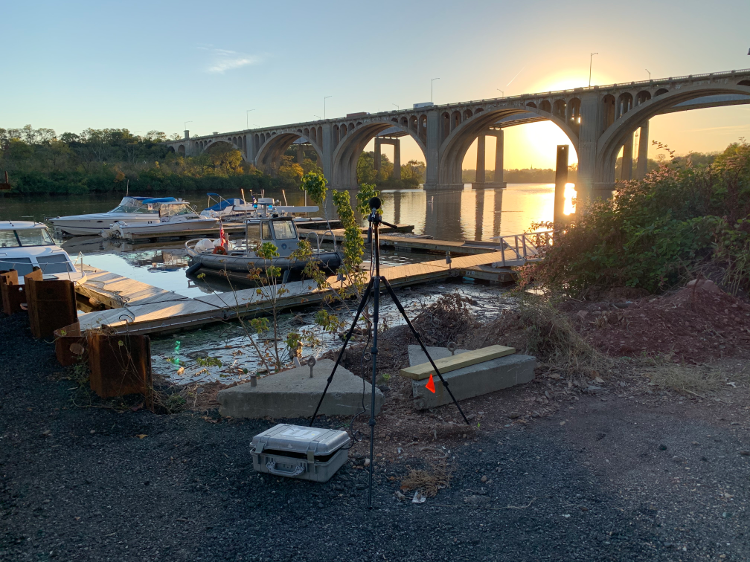Route 1 Northbound Bridge Over Raritan River (Structure No. 1203-150)
Project Description
The project proposes to widen the Route 1 northbound bridge over the Raritan River to add an auxiliary lane along the entire length of the bridge for the purpose of alleviating traffic congestion. The structure also requires rehabilitation, including replacement of the superstructure, deck and railings, repairing spalls and preserving the structural integrity of the bridge. The widened bridge will accommodate three travel lanes, an auxiliary lane, shoulders and a sidewalk on the outer side of the bridge.
The addition of the auxiliary lane greater than 2,500 feet classifies the project as Type I, and therefore, PCA performed a quantitative traffic noise assessment detailed within a Noise Assessment document. The noise assessment was summarized within the NEPA Categorical Exclusion Document (CED) prepared for the project. The traffic noise assessment was performed pursuant to 23 CFR 772 and in accordance with NJDOT’s Traffic Noise Policy. Existing noise measurements with concurrent vehicle classification counts were conducted to validate the project-specific TNM2.5 model. Noise measurements were conducted in October 2020, at a time when schools within the region were partially operating remotely due to the COVID-19 pandemic. Traffic counts documented in 2020 during noise measurements were compared with historic counts (2018) projected to 2020 using NJDOT’s approved growth rate. All volumes using historic counts grown to 2020 were lower than volumes estimated using the North Jersey Transportation Planning Authority’s (NJTPA) 2020 regional traffic model, with the exception of southbound Route 1 volumes during the AM period. For existing modeling conditions, pre-pandemic volumes from NJTPA’s 2020 model were used for all movements except southbound Route 1 AM volumes in which 2020 AM noise peak hour counted volumes were used.
Noise barrier mitigation was investigated in several areas of predicted impacts. One noise wall along Route 1 northbound was investigated to mitigate traffic noise impacts to the Raritan Crossings Apartment Homes complex. The noise wall was determined to meet all NJDOT’s feasibility and reasonableness criteria and was therefore recommended for further consideration under Final Design. The noise analysis was summarized within the NJDOT Categorical Exclusion Document (CED).
Since the project was included within the STIP but located within a CO and PM2.5 non-attainment/maintenance area, improvements were reviewed to ensure the project would not cause a local air quality concern. The project study area included only free flow roadway movements and no intersections; therefore, CO emissions under 2045 Build condition are not expected to cause a violation of the CO National Ambient Air Quality Standard (NAAQS). In addition, the percentage of heavy-duty diesel vehicles are not expected to significantly increase due to project implementation. Therefore, 2045 Build PM2.5 emissions are not expected to cause a violation of the PM2.5 NAAQS. The air quality analysis was therefore qualitatively addressed within the NJDOT CED.
